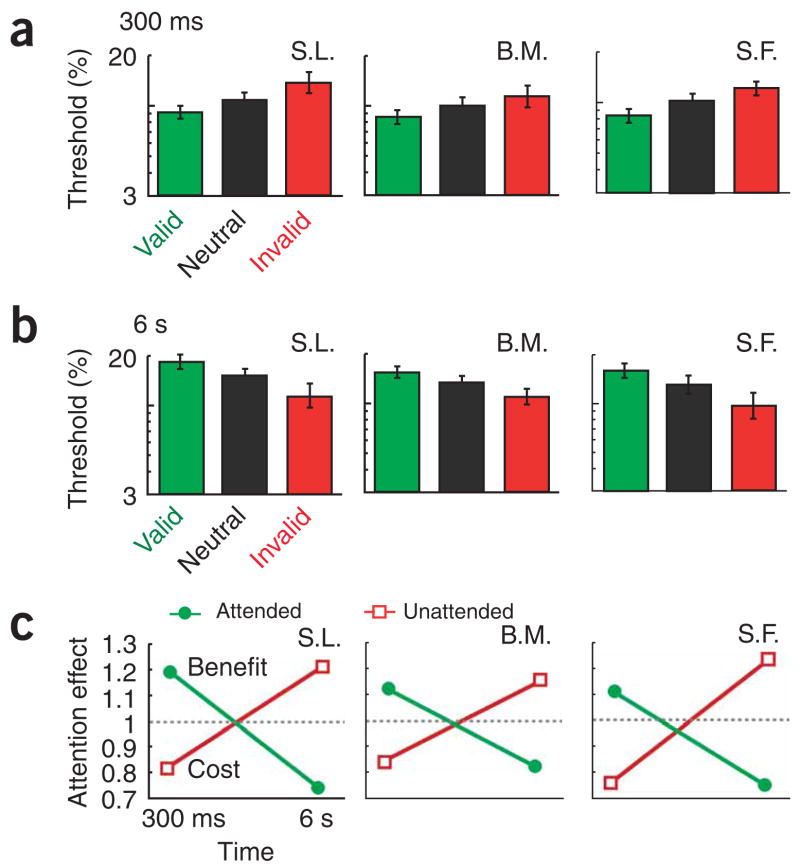Figure 3.
How unattended adapters are affected over time. (a) Contrast thresholds at the 300-ms adaptation duration for the valid, neutral and invalid cue conditions. For all observers, thresholds were lowest with the valid cue (attended) and highest with the invalid cue (unattended). (b) At 6 s, the pattern was reversed: thresholds were highest with the valid cue (attended) and lowest with the invalid cue (unattended). (c) Attentional cost/benefit ratios (neutral/cued) as a function of time. Points falling on the line y = 1 indicate no effect of attention, points above this line indicate a benefit, and those below it indicate a cost. For all three observers, at 300 ms the valid cue (attended) yielded a benefit (ratio > 1) and the invalid cue (unattended) yielded a cost (ratio < 1). At 6 s, the pattern was reversed: the valid cue led to a cost in contrast sensitivity (ratio < 1) and the invalid cue led to a benefit (ratio > 1).

